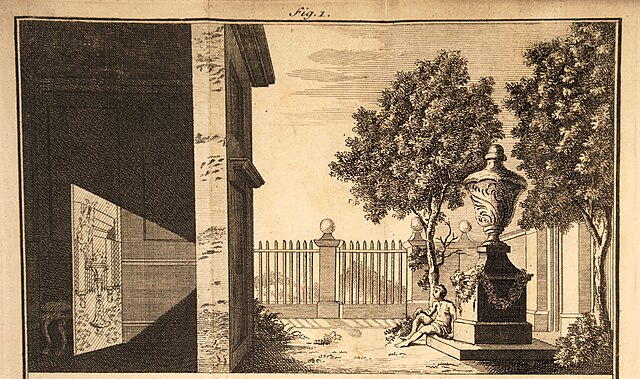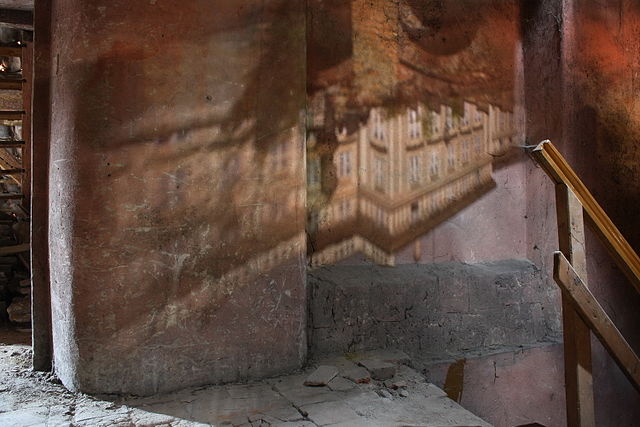
Camera obscura
Optical device / From Wikipedia, the free encyclopedia
Dear Wikiwand AI, let's keep it short by simply answering these key questions:
Can you list the top facts and stats about Camera obscura?
Summarize this article for a 10 year old
A camera obscura (pl. camerae obscurae or camera obscuras; from Latin camera obscūra 'dark chamber')[1] is a darkened room with a small hole or lens at one side through which an image is projected onto a wall[2][3] or table[4] opposite the hole.[2][3] The image (or the principle of its projection) of lensless camera obscuras is also referred to as "pinhole image".[5][6]


Camera obscura can also refer to analogous constructions such as a box or tent in which an exterior image is projected inside. Camera obscuras with a lens in the opening have been used since the second half of the 16th century and became popular as aids for drawing and painting. The concept was developed further into the photographic camera in the first half of the 19th century, when camera obscura boxes were used to expose light-sensitive materials to the projected image.
The camera obscura was used to study eclipses without the risk of damaging the eyes by looking directly into the Sun. As a drawing aid, it allowed tracing the projected image to produce a highly accurate representation, and was especially appreciated as an easy way to achieve proper graphical perspective.
Before the term camera obscura was first used in 1604, other terms were used to refer to the devices: cubiculum obscurum, cubiculum tenebricosum, conclave obscurum, and locus obscurus.[7]
A camera obscura without a lens but with a very small hole is sometimes referred to as a pinhole camera, although this more often refers to simple (homemade) lensless cameras where photographic film or photographic paper is used.